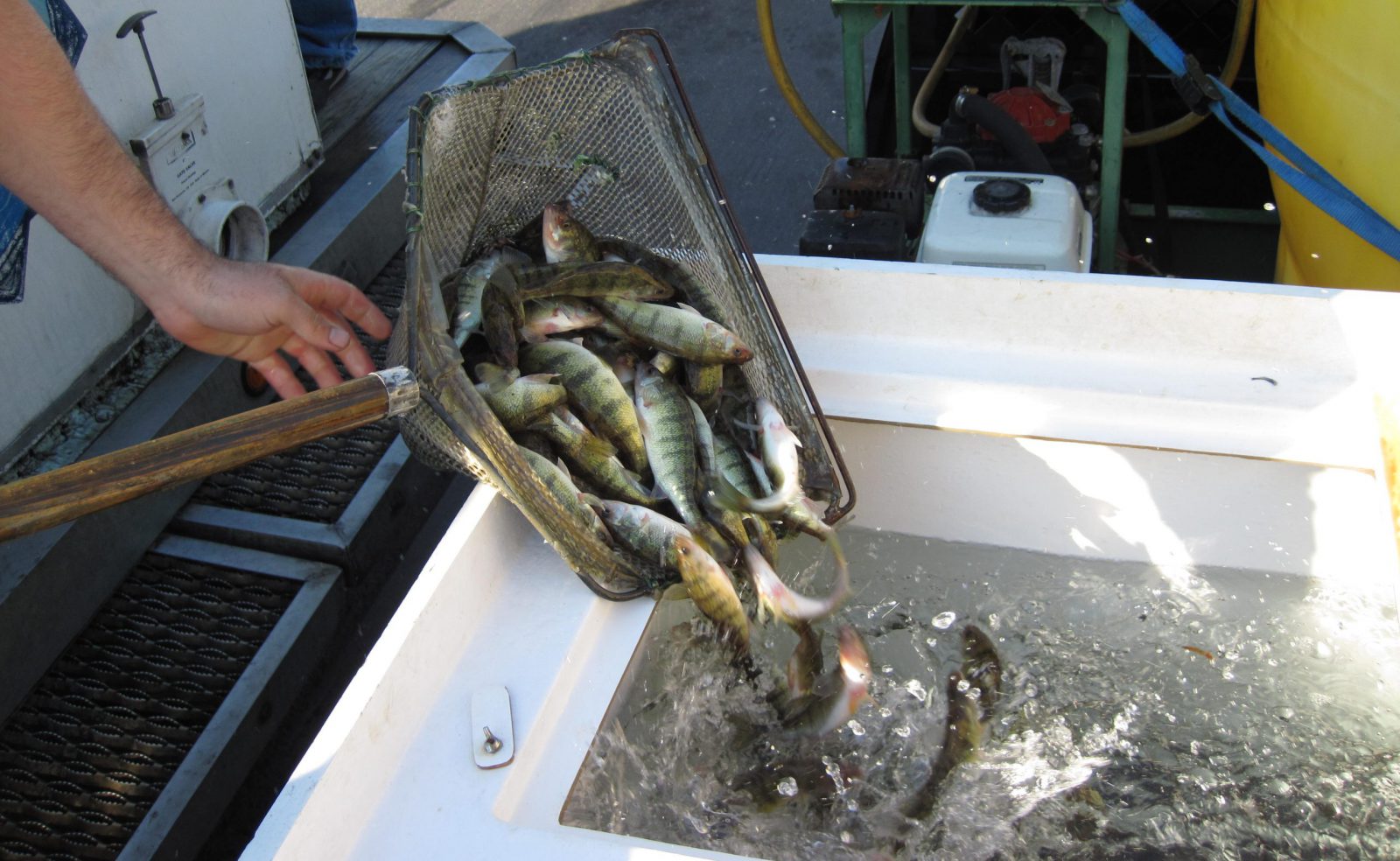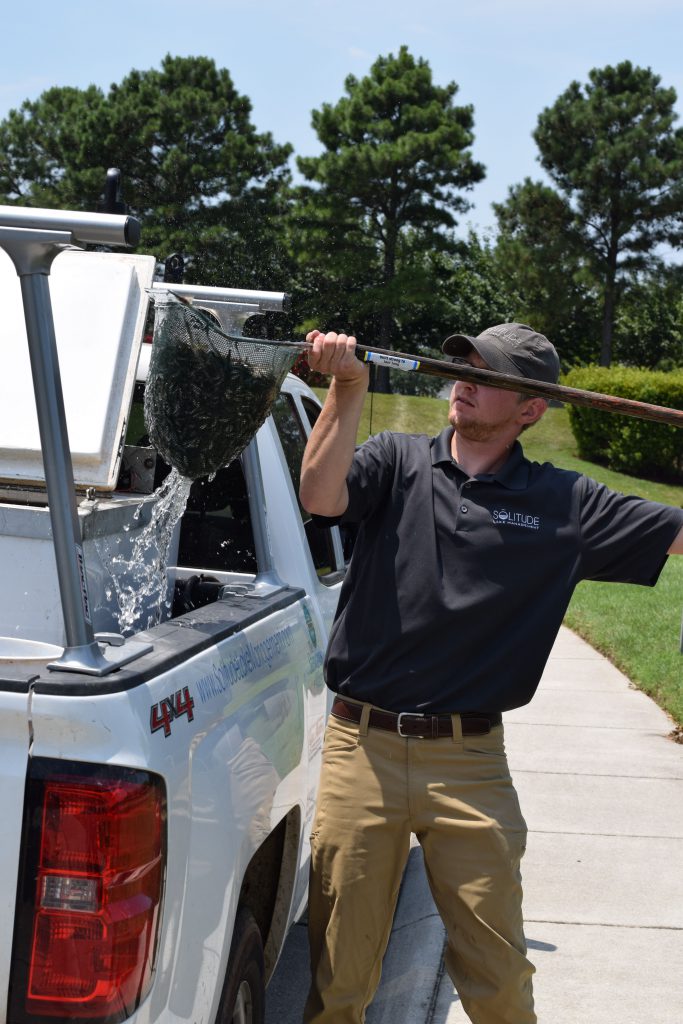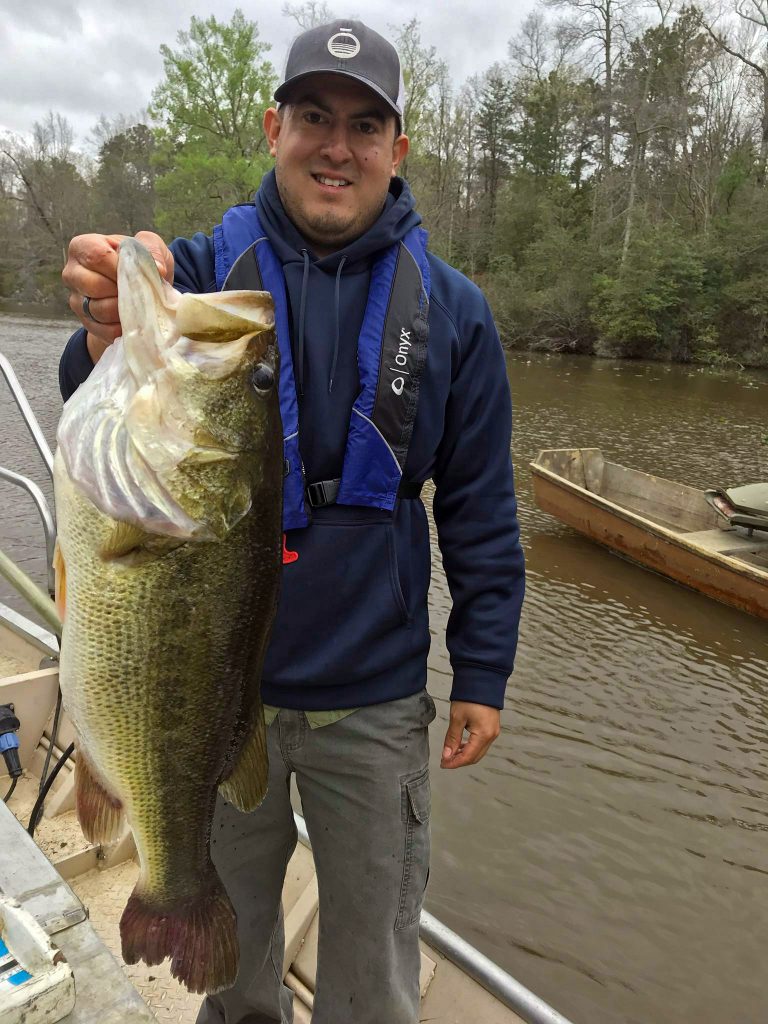
Fisheries Management: Stocking Supplemental Forage Fish
Owning or living on a pond with good fishing is something that many pond owners find desirable. The unfortunate reality is that having good fishing is not something that always occurs naturally. What happens more often than not is that many ponds become predator heavy, throwing off the ideal predator-to-prey ratio.
When this occurs it is very difficult for the forage fish to reestablish naturally, due to the ongoing pressure from predator fish. One management strategy to consider when trying to maintain or establish good fishing is to stock supplemental forage fish. Stocking supplemental forage fish is a term that typically refers to stocking bait fish to improve predator growth. This stocking strategy of adding extra fish to a system is often the last improvement set in motion in a fisheries management strategy, yet is one of the most impactful management strategies when done properly.

Stock Forge Fish to Improve Productivity
Depending on your goals and budget, the amount of forage pond fish stocked will vary greatly. The more forage fish stocked the better the growth rates that can be expected. When considering stocking forage fish it is important to understand that every 10 pounds of forage fish will result in 1 pound of predator growth. For those pond owners serious about improving growth rates on their bass, stocking golden shiners every fall is a great way to achieve results. Stocking in the fall rather than in the spring is a best fishery management practice for two primary reasons.
One reason is golden shiners will compete with the pond’s natural forage fish. As a result, stocking large numbers of shiners in the spring can take away from the pond’s natural productivity. Secondly, stocking in the fall alleviates pressure from the ‘native’ forage fish that were born in the spring and summer and allows those smaller fish a chance to grow and avoid predation. The ideal time for stocking golden shiners is from September through November as it provides the most value for the investment.
In addition to stocking shiners, stocking trout is another great supplemental fish stocking option. Trout serve as an ideal food source for bass while also providing fishermen the opportunity to catch a different species of fish over the course of the fall, winter, and spring. This change in diversity is great for both private and community-owned ponds. One of the most desirable advantages to stocking trout is that kids can catch them fairly easily. Having a species of fish in the pond that are relatively simple to catch is a great value to most pond owners with kids and adults alike who love to fish.

Stocking the Best Fish for Your Waterbody
Aside from the great fishing opportunities they present, trout serve as an outstanding food source for bass. The ability to stock intermediate-size trout that your bass can eat, yet large enough for people to catch when fishing, make them a preferred choice for a supplemental forage stocking program. One downside to trout is that they cannot tolerate water temperatures above the low 70’s. Fortunately for the bass, as trout slow down in the spring, they become an easy meal and put a bunch of weight on the bass quickly. Trout’s inability to survive year-round in most ponds requires pond owners to restock them annually, but the positive sides to having trout greatly exceed the need for continual restocking. The ideal time of year to stock trout ranges from September through November, depending on water temperature.
Achieving growth rates on predator fish in ponds can be very difficult depending on the condition of the fishery. Even though supplemental forage fish stocking as a stand-alone fisheries management strategy is not likely to result in a well-balanced fishery, it does however play a critical role as a management step in the process of improving a fishery. When putting together your management strategy for maintaining or improving growth rates on your predator fish, make sure to consider stocking supplemental forage fish.
Managing A Fishery Habitat
SOLitude Lake Management is committed to providing full servicelake and pond management solutions that improve water quality, preserve natural resources, and reduce our environmental footprint. Our services include lake, pond, wetland and fisheries management programs, algae and aquatic weed control, mechanical harvesting, hydro-raking, installation and maintenance of fountains and aeration systems, water quality testing and restoration, bathymetry, lake vegetation studies, biological assessments, habitat assessments, invasive species management and nuisance wildlife management. Services, consulting and aquatic products are available to clients nationwide, including homeowners associations, multi-family and apartment communities, golf courses, commercial developments, ranches, private landowners, reservoirs, recreational and public lakes, municipalities, parks, and state and federal agencies. Learn more about SOLitude Lake Management and purchase products at www.solitudelakemanagement.com.









